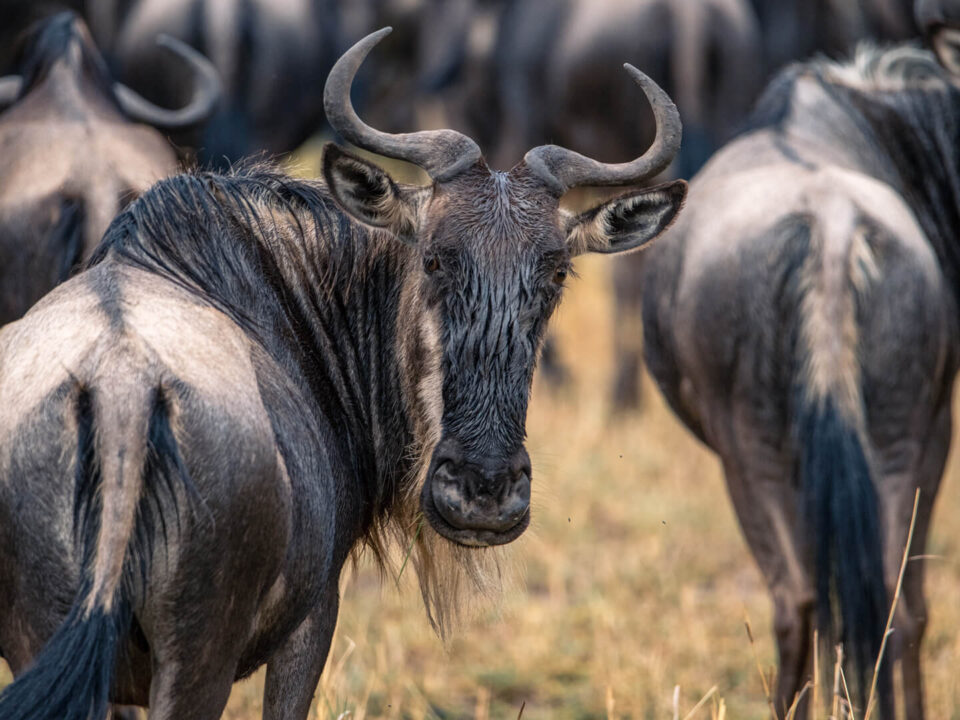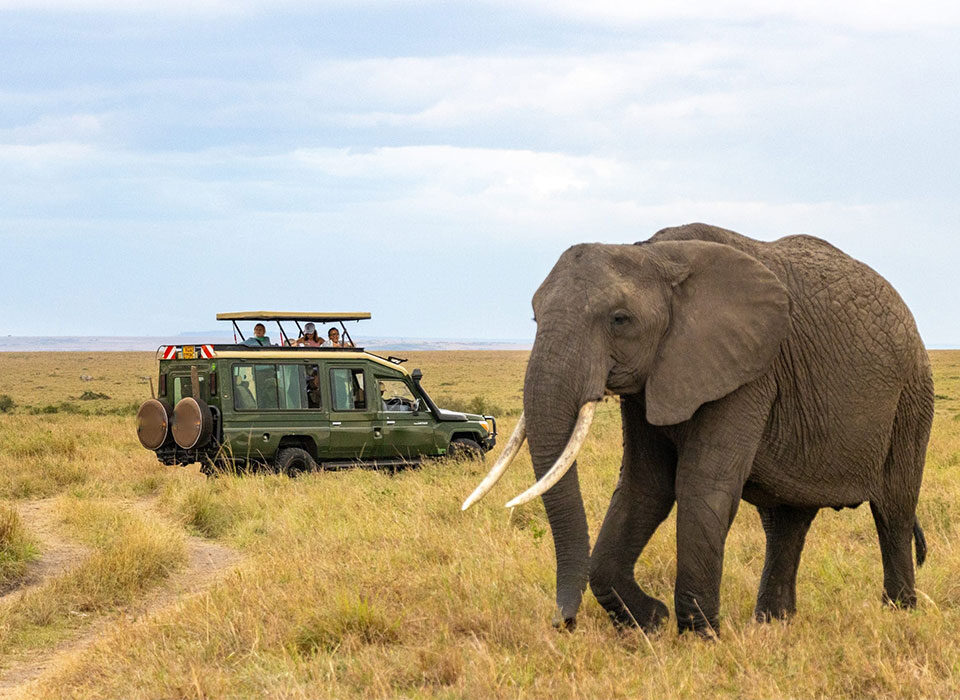- DIRECT CONTACTS:
- +256394517569
- tours@safarioclock.africa
Uganda Gorilla & Safari Tours

Top Questions About Kenya Safaris
October 27, 2025When is the best time to go on safari in Uganda?
Uganda can be visited at any time. Mountain gorilla trekking is on most tourists’ itineraries and permits are available throughout the year. Uganda is a tropical country with lots of rainfall. The wettest months are March to May and these months can be problematic to travel in. During these Wet season months, some roads become very muddy and hard to negotiate. The Dry season months of June to August and December to February offer the easiest travel conditions and these months are also recommended for Ugandan gorilla trekking. General wildlife viewing in the savannah reserves is also best during the Dry season months as animals gather around rivers and waterholes, and the grass is shorter, which makes spotting them easier.
Why visit Uganda, what are the major attractions?
Uganda is mostly known for its mountain gorilla tourism and most people visiting Uganda will include a gorilla trekking experience in their itinerary. It is possible to go on a Uganda gorilla tour as an add-on to an East African safari in Kenya or Tanzania, but Uganda has lots more to offer, so consider visiting some of the savannah reserves and tracking chimpanzees as well. Queen Elizabeth National Park offers a variety of activities such as chimpanzee trekking in Kyambura Gorge (or nearby Kalinzu Forest) and a boat trip on Kazinga Channel. The wildlife is diverse and one of the highlights is the tree-climbing lions on the Ishasha Plains. Murchison Falls National Park offers excellent wildlife viewing as well as spectacular scenic beauty. You can take a boat trip on the Nile River to the famous Murchison Falls or to the delta. The latter is particularly rewarding for birders, and sightings of the prehistoric-looking shoebill are very common in this area. More remote is Kidepo Valley National Park. This park offers a true wilderness experience and is home to many species that don’t occur elsewhere in the country, including the graceful cheetah. Primate-lovers should visit Kibale National Park as it offers the most reliable chimpanzee trekking in the country, and also has the greatest variety of monkeys of any forest in Uganda.
What does gorilla trekking in Uganda cost?
“The permit fee for mountain gorilla trekking in Uganda is currently US$800 for visitors from outside of Africa. Although this might seem expensive, it is a bargain compared to the US$1,500 permit fee in Rwanda, which is currently the only other country where these gentle giants can be tracked. Note, however, that permits for residents of Uganda and citizens of other African countries are quite a bit cheaper than this. Gorilla trekking is offered in two places in Uganda: Bwindi Impenetrable National Park and Mgahinga Gorilla National Park. Both offer a similar experience where you can spend one hour with a gorilla troop after you have reached their location. The group size is limited to eight people. An activity offered in Bwindi only is the gorilla habituation experience. This involves visiting a gorilla group that is still in the process of getting used to tourist visits. The activity is limited to four tourists per group, and you can stay with the gorillas for up to four hours (as opposed to the usual one hour). Viewing is less easy as these gorillas prefer to keep their distance since they aren’t yet fully habituated. The price for this special activity is US$1,500.
How is the wildlife viewing in Uganda?
Uganda is an exciting destination for wildlife viewing, and its strength lies in its variety. Uganda has beautiful rainforests that are home to many primates. Mountain gorilla trekking is the top attraction, but almost equally exciting is chimpanzee trekking. A troop of habituated golden monkeys, a species unique to the Albertine Rift, can be visited in Mgahinga Gorilla National Park. Up to a dozen other monkey species can be seen elsewhere in Uganda, with Kibale National Park being particularly notable for its primate diversity. Away from the forest environment, Uganda has several good savannah reserves where more conventional wildlife viewing is offered on game drives and boat trips. None of the savannah reserves offers quite the same level of exciting animal viewing as the Serengeti National Park in Tanzania or the Masai Mara National Reserve in Kenya; however, the scenic beauty in Uganda is unparalleled and the birding is nothing less than outstanding.
How safe is Uganda for tourists?
“Uganda is a safe destination. The north of the country has had periods of instability, but these issues are now firmly in the past. It is, however, recommended that you get local advice on the current safety situation before heading into the Karamoja region and Kidepo Valley National Park. As is the case in any developing country, petty crime is a concern in urban centers, and visitors should take normal safety precautions when visiting cities and avoid traveling at night. All national parks have security police to maintain the safety of all visitors.
How do I select a reliable Ugandan tour operator?
Most Africa-specialist operators will be able to add a Uganda gorilla trekking package to any African safari. However, if you would like to explore the country further, a specialist Uganda operator is recommended. There are several good local outfits in the country and many of them offer Uganda gorilla trekking tours through SafariBookings.com website. Always check the customer reviews as this will give you a good indication on reliability and quality of the guides and vehicles offered by the different operators. International operators usually work through these local outfits, but they sometimes offer more insurance and they might be in a better position to deal with issues if something goes wrong. They are also able to book your international flights as part of a Uganda gorilla trekking tour.
What type of accommodations can I expect?
Uganda has developed for tourism more recently than some of the more established safari destinations in the region, such as Kenya and Tanzania. Most parks and reserves now offer a good variety of accommodations options ranging from budget to very upmarket. The Ugandan gorilla trekking reserves of Bwindi and Mgahinga are located at high altitude and the climate tends to be cold and wet. Most accommodations in this area are therefore suitable to this kind of climate, and you can expect cozy cottages with log fires. Luxury tented camps are a popular option in the savannah reserves. Camping is also an option. Aside from being the most budget-friendly option, it can be very rewarding for the more adventurous traveler.
What can I expect from a safari in Uganda?
Variety is key on a Uganda safari. Each park in the country offers a very different experience and set of activities. The country is immensely beautiful, with many scenic highlights and landmarks such as Murchison Falls on the Nile River in Murchison Falls National Park, the volcanoes of the Virunga Mountains in Mgahinga Gorilla National Park, true rainforest in Bwindi Impenetrable National Park, and a string of Rift Valley lakes in Queen Elizabeth National Park. Wildlife viewing in the savannah reserves is not as overwhelming as in some of the top safari countries, but there is a good variety of animals to be seen. Queen Elizabeth and Murchison Falls National Parks offer excellent boat trips to supplement the game drives. Most visitors to the country will track mountain gorillas and many will also track chimpanzees. A minimum level of fitness is required and one must be prepared for strenuous hiking on slippery mountain slopes through thick forest vegetation. The country receives quite high rainfall throughout the year, and although most rain happens in the afternoon, you might well get wet on occasion. Uganda is a top destination for slightly adventurous visitors who enjoy viewing wildlife as well as hiking.




